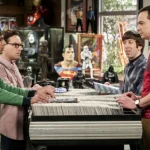Disney fairytales may seem sweet and innocent, but the truth is that the majority of them are based on folklore created by the Grimm brothers, and they didn’t exactly intend for those stories to turn into kids’ movies. The original versions of these classics were actually pretty dark. If you’re ready to have your childhood ruined, read on to see what these fairytales were initially about!
Snow White
If you ask us, even Disney’s version of Snow White is pretty dark. The Prince kisses Snow White, who — for all he knows — is deceased, and he’s never even met her! These days, if some guy kissed a girl who’s passed out, it wouldn’t be seen as romantic.
Anyway, for some reason, the Queen is the villain of this story rather than the Prince. Well, in the original version, she’s forced to wear fiery shoes and dance in them, until she eventually dies from exhaustion.
Beauty and the Beast
Those who say Beauty and the Beast is about Stockholm Syndrome are actually kind of right! The original tale was written as a critique of arranged marriages that were commonplace at that time. In those days, girls as young as 13 would be forced to marry wealthy adult men.
Later versions of the story did the exact opposite of the original intent and actually tried to teach women “good manners” and how to accept being in such a marriage.
Sleeping Beauty
After hearing what Sleeping Beauty was originally about, we kind of wonder if the King was the Prince from Snow White all grown up.
The story goes that a wandering King impregnated Aurora while she was asleep, and she gave birth while still in a coma. Eventually, Briar Rose woke up to find that she was the mother of twins. Of course, by then, the King was nowhere to be found.
Little Red Riding Hood
The OG Little Red Riding Hood was anything but a sweet girl trying to care for her grandma. Little Red Riding Hood is a story of a young girl and the Big Bad Wolf who work together to eat the grandmother.
Then, Red unclothes and lies beside the wolf on her grandma’s bed. To be fair, the Wolf did coerce Red in the original tale as well. But, come on, could you be convinced to eat your grandmother?
Cinderella
We have to give Cinderella’s Evil Stepsisters credit — those two were dedicated! In the original story, the pair mutilated their feet in order to fit into the glass slipper. They fooled the Prince for a bit… until magical doves removed their shoes to show the Prince the truth.
Later, after Cinderella became queen, she ordered the doves to peck out the Stepsisters’ eyes as revenge. Why she wasn’t mad at the Prince, who called her the love of his life but literally couldn’t recognize her face, is beyond us.
The Princess and the Frog
Have you ever gotten so frustrated with your phone or some other item that was acting up, that you just threw it against the wall? That’s essentially what the Princess went through in The Princess and the Frog when that pesky Frog just wouldn’t become human.
She got so exasperated that she threw him at a wall, and the impact broke the curse! We don’t recommend trying that strategy with a bad date at home.
The Little Mermaid
The original version of The Little Mermaid serves as what all adaptations should be, which is a cautionary tale about changing yourself for someone else. The OG Ariel was in excruciating pain every time she used her legs, as a not-so-subtle reminder that she made the wrong choice.
Eventually, the Prince married someone else — someone he could actually communicate with — and the Little Mermaid took her own life. While we’re on the topic of this movie, Ursula isn’t a villain; she just wanted her contract honored. Fair enough.
Rapunzel
In the first version of Rapunzel, she became pregnant with her visitor’s baby. Rapunzel tried to hide her growing belly from Gothel, but she eventually figured it out when Rapunzel’s clothes became too tight. Meaning, the jig was up, and our hero never made it out of the tower.
Our question is, if the young woman had so much hair, couldn’t she just cover her stomach with it when Gothel came to visit? Weirder things have happened in the fairytale world!
Pinocchio
Pinocchio is obviously a cautionary tale about lying, but the original version drives the point home much more forcefully. There are two tellings of Pinocchio’s fate, and neither of them is pretty.
In the first one, he’s executed via hanging as a punishment for his crimes. In the second rendition, he’s forced to perform in the circus, gets sold, drowns in the ocean, and is eaten by a school of fish. If that won’t get kids to stop fibbing, we don’t know what will!
Peter Pan
Anyone who’s been in the dating scene knows that Peter Pan Syndrome — the refusal to grow up — is a very real thing. Well, in the original Peter Pan story, the character’s derangement was even worse. Apparently, the Lost Boys did age in Neverland, but Pan would “thin out” the adults.
The story never explains how that’s done, but it’s assumed either by ending their lives or banishing them. Don’t ask us why Peter Pan wanted to be on an island with a bunch of kids.
Moana
Moana didn’t come from the Grimm brothers but from Maori mythology. In that version, Maui turned himself into a worm in order to crawl into the Goddess of Night’s nether regions. Once inside, he granted humanity as a whole (not individual humans) immortality.
However, our hero’s story ended there, as the Goddess of Night woke up and crushed him with her private parts’ teeth. To be fair, we’d probably do the same if we awoke to find a worm in us.
Jack and Jill
We have France to thank for the seemingly innocent, albeit strange, rhyme Jack and Jill, which is actually a poem mocking the country’s former leaders. Jack is King Louis XVI while Jill represents Queen Marie Antoinette. Louis lost his crown and was then beheaded, followed by Antoinette.
While we’re on the subject, there’s absolutely no evidence that Marie Antoinette ever said, “Let them eat cake,” making that just another myth about the Queen.
Stepmothers
Many of the Grimm fairytales, such as Cinderella and Hansel and Gretel, changed the stepmothers’ titles in order to be more child-friendly. Those stories originally featured “wicked” stepmothers, which was later changed to “evil” stepmothers.
If you ask us, that’s like Gwenyth Paltrow insisting that she and Chris Martin weren’t getting “divorced,” but rather they were “consciously uncoupling.” They may think it’s different, but those two things are exactly the same.
Rumpelstiltskin
The first version of Rumpelstiltskin came out in 1812, and it was surprisingly tame for the Grimm brothers. In that tale, the imp vanished after he was defeated. However, the storytellers came to their senses by 1857 and wrote a new, more on-brand edition to Rumpelstiltskin’s fate.
This time, the imp was so upset that he’d lost, he ended his life by tearing his body in half. He put one foot on the ground, flung the other into the air, grabbed it, and… you get it.
One Thousand and One Nights
We have Scheherazade to thank for Aladdin and Sinbad, both of which are from a series of tales titled One Thousand and One Nights. Legend has it that Scheherazade encountered a monarch who would take a new wife each night and end her life the next morning.
By the time he met Scheherazade, he had already led 1,001 women to that fate. However, Scheherazade enchanted the monarch with her tales, and he allowed himself to be entertained with her stories instead.
Werewolves
Lots of fairytales and myths have werewolves in them, but possibly the first story to introduce such a character was the Swedish Varulven. The tale was about a pregnant woman who was being chased by a creature that’s described as what we’d now call a werewolf.
A man attempts to save her, accidentally exhausting his horse to the point of demise in the process. It’s unclear exactly what happened to our hero and the damsel in distress, but one of her limbs is discovered at the end.
Hansel and Gretel
It’s widely believed that the story of Hansel and Gretel was about the Great Famine of 1315-17. Sadly, a lot of parents abandoned their children out of an inability to feed them. That would explain why the siblings were left in the woods alone.
The witch eating them also makes sense with the time frame, as some people resorted to cannibalism out of desperation. As for the house being made out of candy, that may have been a hungered delusion on Hansel and Gretel’s part.
The Goose Girl
Each rendition of The Goose Girl ends in a slightly different way. All versions of the story result in the King figuring out the Maid’s hoax and tricking her into choosing her punishment by asking her what should be done with a false servant (without telling her he knows she is one).
Different adaptations have the maid making different choices of what the consequence should be. In the original story, she’s unclothed, put in a barrel of nails, and dragged through the streets until her life ends.























